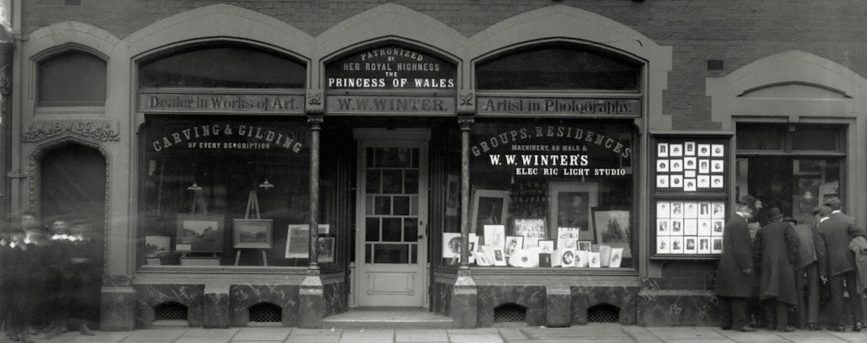Joanna takes us through the continued urban growth and development of Midland Road, Derby.
This week I am looking at the area on the south side of Midland Road where the W. W. Winter premises are situated. This has been an area of much change since the development of the 1850s. Again maps, both commercial and those produced alongside planning applications have been helpful. Together with Directories of the area it has been possible to build a picture of life in the area over the years.
The development probably in 1854 seems to have started at the London Road end with premises on the corner, now Philatelic Auctions. The Winter’s studio sits between this and a building c.1857 containing two shops and a vehicular entrance leading to a yard. The plots between this and Lower Carrington Street were occupied by yards relating to building supplies and services, to be replaced over the years by shops.
A tramway depot and stables occupied the corner of Lower Carrington Street and Midland Rd for a short time. The 1880 OS map shows the tramlines running into it. This was followed by the Post Office building and a row of shops including John Hopley Dodd’s furniture emporium. The shops and old PO building were demolished in the 1960s along with the yard used by W. W. Winter’s and replaced with the concrete building seen today.
The W. W. Winter premises date from 1867 the only reference for this being the date in the decoration above the side entrance. More about this next time.
